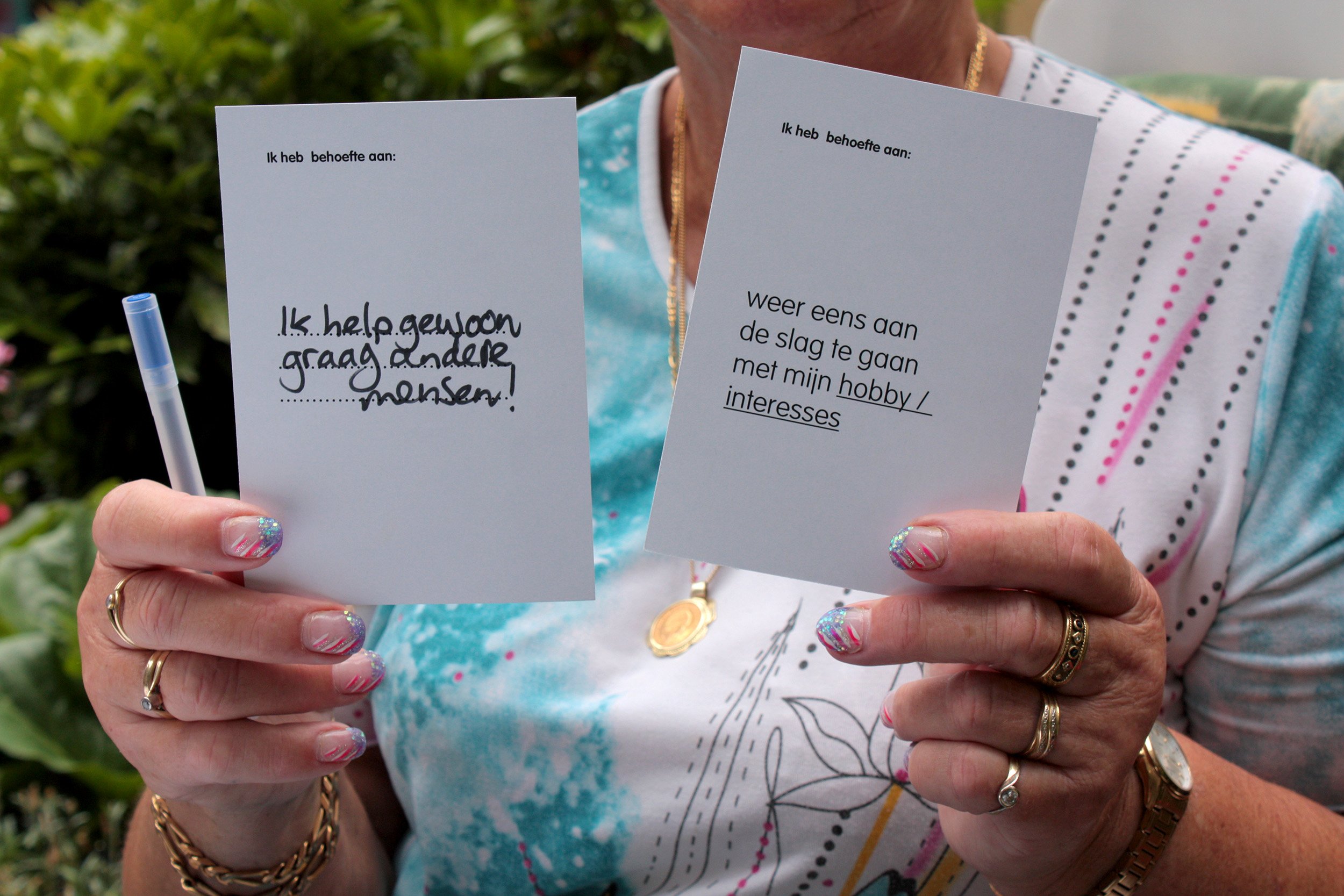
Roparun
Co-designing improvements to cancer support & building Human-Centered Design capability
Client:
Roparun Foundation
Team:
Jonas Piet + in10
Period:
April 2013
The problem
Cancer disrupts lives. It affects health and wellbeing, but also relationships, self-image and work. Roparun Foundation provides psychosocial support through their partners, from therapists to hairdressers. I was asked to map ‘as is’ journeys of people with cancer, find opportunities for service improvement, and embed the methodology.
The project
Home interviews helped to capture experiences of living with cancer in journeys and profiles. These were used in co-creation sessions, resulting in ~40 service ideas, five of which were prioritised and visualised with a digital agency. This co-design approach exposed the client to Human-Centered Design methods, and created ownership over ideas and journeys.
My value-add
Ran home interviews, captured insights in a re-usable format for co-design
Developed a format to contextualize service journeys within people’s larger lives
Led a co-creation process that resulted in adoption of ideas and methodology
Supported the charity to find and hire a talented Service Designer
Problem Discovery
In-dept interviews at participants’ homes
In this research, the service journey and experiences with Roparun Foundation were mapped. This was placed within the larger context of living with cancer — for most participants the rest of their live.
Where possible, I conducted the twelve semi-structured interviews at people's homes. Participants feel more at ease and there are always observations to trigger specific questions; for example about spiritual support.
Conversational tools
Talking about cancer is hard, having to recollect past events and breaching a difficult topic. Tools like support diagrams, timelines and cards with emotions and needs have helped to guide conversations and reflection.
These tools helped to go deeper into topics step-by-step and to see trends and patterns in series of events. They have also served to illustrate insights in an impactful way.
Sharing insights about living with cancer and helpful support
In this workshop we literally walked through actionable insights, grouped in themes such as ‘Responding to online information needs’. Each insight builds on observations, and links back to quotes on participant profiles.
Another way to read the research insights is through three people’s journeys. The top part shows a service journey. This service journey is part of the larger trajectory of living with cancer, shown at the bottom of the poster, starting at diagnosis or onset of complaints.
Combining the layers showed ample opportunities for improvement.
Solution Discovery
Generating ~40 ideas for service improvement
Two co-creation workshops were held in which journey posters were used to create empathy and provide guidance to generate relevant ideas. Involving a wide variety of actors with different perspectives (from hairdresser to director) contributed not only to the quality and number of ideas, but also to their ownership.
'Idea templates' showing generic service interactions helped participants to sketch their ideas quickly. At the end of the workshop, participants walked through an alternative service journey from the perspective of ‘their client’.
Follow-up and prioritisation
Captured ideas were described in a consistent way, and in another session mapped onto an Action/Priority matrix. A handful of ideas was appropriate for a first service design project.
These ideas were visualised and grouped in two workstreams. The first, ‘From arm chair (or anywhere)’, are ideas to make existing services more accessible though online channels. ‘Sharing stories’ are ideas using narratives to create connections with self and others.
Improvement ideas: ‘from armchair (or anywhere)’
Improvement ideas: ‘sharing stories’
Results
Service improvement
Various service improvement were picked up straight away (videos, referral materials at hospitals and GPs) with decisions on others scheduled.
Design capability
Roparun Centra hired an in-house Service Designer (their first designer) with my guidance, anchoring the approach in the organisation.
Partnership collaboration
The project lead to stronger collaboration between existing partners, working together on service development based on shared research insights.
“We also learned a lot from the approach and use of tools such as the timeline. I was very positively surprised at how that was translated in the patient journeys. The timeline could be further developed as a communication tool, intake tool and possibly even as a therapeutic tool.”
— Director Roparun Centra




















